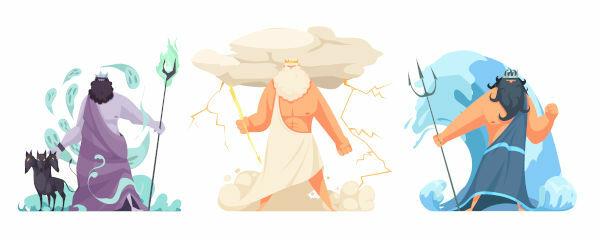Characterized by simple religious rites, Zoroastrianism or Mazdeism predominated as a religion in the region of the Persian Empire until the invasion and domination by Muslim Arabs, in the seventh century. Developed by Zarathustra (or Zoroaster for the Greeks), around the 6th century BC. a., the religion became predominant in the Empire.
It is not known for sure when Zarathustra lived, there are indications that he lived around the 10th century BC. a., or even later, between centuries VII and VI a. Ç. The legend states that Zarathustra lived isolated for many years in the desert and that, at the age of 30, he would have received the seven teachings of the god Ormuzd, which led him to start spreading a religion based on the ideals of purity and equality.
Zoroastrianism preached a dualistic interpretation of the world, divided between the forces of good and evil. Zarathustra's teachings affirmed the existence of a supreme god, who had created two other powerful beings who shared his own nature: Ormuzd (or Ahura-Mazda, or even Oromasdes, according to the Greeks) would be the source of all good, while Ariman (Arimanes) would be the source of evil, after rebelled.
It was up to men to worship Ormuzd, since he was the creator, the god of light and the spiritual realm. The cult of Ormuzd was necessary, as Ariman had created a series of poisonous beasts, plants and reptiles. The two gods lived in constant conflict and the supremacy of good needed Ormuzd's support.
These conflicts between good and evil would be constant until the time when the followers of Ormuzd would be victorious, condemning Ariman and those who followed him to eternal darkness. This doctrine thus understood a kind of life after death, where the righteous would find their reward in a paradise, and the others would be punished to live in a kind of hell.
Do not stop now... There's more after the advertising ;)
These teachings would be compiled in the book Zend-Avest (or Avesta), which would have been written by Zarathustra. The rites were to take place in mountains, where sacrifices and the worship of the sun and fire were to be performed. This worship of the god of light would be conducted by magicians, the priests of the religious ceremonies who would lead the chanting of hymns and the keeping of the fire burning, as a representation of the power of Ormuzd.
Due to his knowledge of astrology and incantations, the term magician came to be oriented in the definition of all magicians and sorcerers, losing in most cases the priestly definition that existed in the conception of the Zoroastrianism.
The religion underwent changes after the Macedonian domination over the Persian Empire, later recovering the original conceptions. However, the great blow suffered by Zoroastrianism was due to the Islamic expansion, since the adherents of the religion were considered infidels, and were persecuted. Some groups fled to the Querman desert and to Hindustan, the Indian subcontinent, where they are known as the Parsis and held some Fire Temples, in honor of Ormuzd.
By Tales Pinto
Graduated in History
Would you like to reference this text in a school or academic work? Look:
PINTO, Tales dos Santos. "Zoroastrianism, the religion of the ancient Persians"; Brazil School. Available in: https://brasilescola.uol.com.br/mitologia/zoroastrismo-religiao-dos-antigos-persas.htm. Accessed on June 27, 2021.

